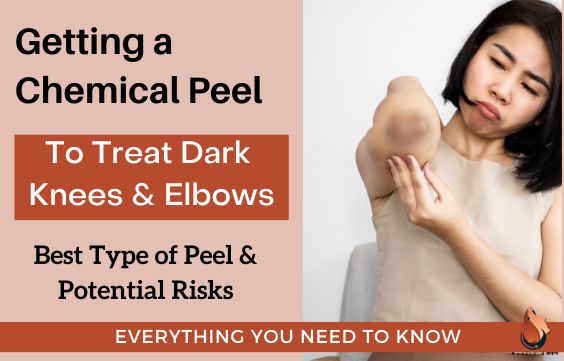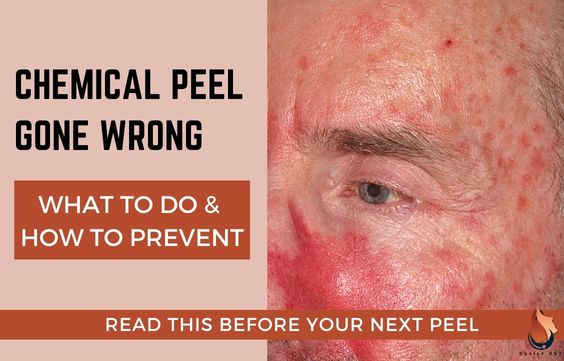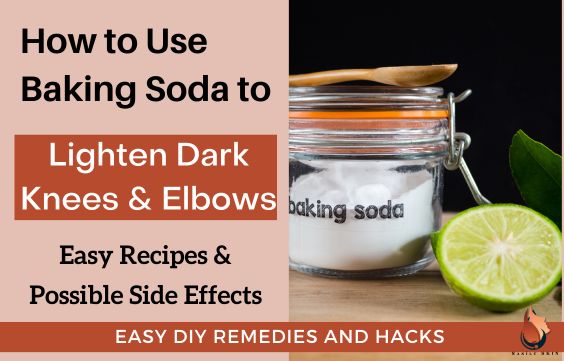Getting a Chemical Peel to Lighten Dark Knees & Elbows

This may sound strange but you can 100% use chemical peels for dark knees & elbows.
No, this isn’t a trick. But the thing is that you have to know what chemical peel to use and how to use it.
So needless to say (or much needed), you should get this done by a PROFESSIONAL.
Choosing Chemical Peels For Dark Knees & Elbows
The body is generally thicker, less sensitive, and has more resilience. So, many dermatologists and professionals will often recommend stronger peels than the ones used on your face.
However, with that being said, not all chemical peels will be suitable for all your body parts, especially for areas that flex and bend a lot, like your knees and elbows.
This is why it is important to consult a professional. Together, you can discuss your skin type, skin condition, reasons for treatment, and desired results. Then, a tailored treatment plan can be created for you.
Related Articles:
9 Best Medical Ways to Lighten Dark Knees & Elbows
7 Best DIY Remedies For Dark Knees & Elbows
Best Scrubs & Exfoliators for Dark Knees & Elbows
Most Common Chemical Peels Used On The Knees & Elbows
Lactic Acid
This is very gentle and is great if you have thin or sensitive skin over your knees and elbows. If your skin is rough or wrinkled, and you want to smoothen it and even your skin tone, this is a great gentle solution. You may need multiple treatments.
Glycolic Acid
This is a bit stronger but can be used in various concentrations depending on your needs and what your skin can handle. This is great for smoothening out texture or rough patches, and evening out skin tone.
Related Article – How to Use Glycolic Acid to Lighten Dark Elbows & Knees
Jessner’s Peeling Solution
This peel is one of those that penetrate deep into the skin. It is great for things like crepey skin, texture, deep hyperpigmentation, wrinkles, etc. It also works great when combined with other solutions for combination peels if necessary. This would be great if you have thickened skin over your knees and elbows that are sandpapery, dark and stubborn.
TCA (Trichloroacetic Acid) Peels
These peels are usually the strongest ones, but they can be used in low, medium or high concentrations. They are most suitable for more serious skin issues. However, regardless of the concentration, TCA penetrates the skin deeply (which is why it is only used on the face for medium and deep peels).
TCA peels are recommended to be used on small areas of skin, in low concentrations, one area at a time. It can get a bit uncomfortable. So, if you’re treating your knees and elbows, it’s best to do one at a time.
Related Articles:
A Guide to Using Hydroquinone for Dark Knees & Elbows
How to Use Lemon to Lighten Dark Knees & Elbows
What Causes Dark Knees & Elbows & How to Prevent
Expected Results From Chemical Peels For Dark Knees & Elbows
How long will it take?
This will depend on the concentration and type of chemical peels that you get, and how many sessions you need.
You will not see a difference until your skin has finished peeling and has healed. The time this takes will depend on:
- How you prep your skin before the peel is applied
- The concentration of the acid used
- How deep it penetrates your skin
- Your skin’s reaction and healing time
- How you take care of your skin during the peeling process
Superficial peels (those that only affect the top layer of the skin) will take about 2-7 days to peel and heal.
Medium peels (those that penetrate the dermis or second layer of the skin) will take about 7-14 days.
Deep peels (those that penetrate all the layers of the skin) will take about 21 days to heal fully.
However, once healed after each session, the effects are usually immediately noticeable.
Click here to read more about what to expect from chemical peels in general: What to Expect After a Chemical Peel & When Do You Recover
How much lighter will your skin be?
This will depend on how dark your skin was to begin with, and how deeply affected your skin is.
If you have more severe skin texture and hyperpigmentation, then you may need more than one treatment for your skin to achieve the desired effect.
However, many people see a significant difference after just one treatment.
Remember that everyone’s skin is different and some peels may be more effective for some than others.
Side Effects And What To Expect From Chemical Peels For Dark Knees & Elbows
Chemical Peels are not without their risks and side effects. This is why it is important to make sure that they are done correctly.
Keep in mind that flexible areas like your knees and elbows will be more tender and uncomfortable. This is to be expected as this part of the skin is in constant movement.
The other most common side effects of chemical peels are:
- Redness
- Irritation
- Peeling
- Itching
These side effects are normal and are to be expected. They should all resolve on their own a few days into the process. However, if they worsen and do not resolve, you will need to see your doctor again for some help.
Check this video out to see the immediate complications of chemical peels:
Side Effects that are not as normal
Now, if your chemical peel goes badly (it is too strong, you are allergic, or you have done improper skin prep), you can experience things like:
- Allergic reactions
- Blisters
- Scarring and hyperpigmentation from bad healing
- Chemical burns
Check out this short video about the more serious complications of chemical peels.
Who Should Not Get Chemical Peels For Dark Knees & Elbows
If you are experiencing (or have recently experienced) any of the following, body chemical peels may not be the best option for you:
- Pregnancy and breastfeeding (this is conditional. Some peels can still be done on the face, and other areas that do not directly affect the baby). Click here to read more: Can You Get a Chemical Peel When Pregnant or Breastfeeding
- Active skin infections, bacterial, fungal, or viral
- Certain skin conditions, like psoriasis or eczema
- Some health conditions, such as asthma or heart conditions
- Recent sun exposure and tanning
- You are using medications like isotretinoin (Accutane)
- Recent hair removal procedures in the area
- You have a history of keloids or hypertrophic scarring (this can be more common in areas like the knees and elbows)
- Recent surgical or beauty procedures
Related Articles:
5 Best Creams to Lighten Dark Knees & Elbows
How to use Baking Soda to Lighten Dark Knees & Elbows
How to Use Retinol to Lighten Dark Knees & Elbows






